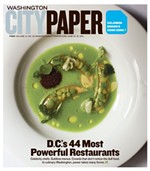Spirits of Place
An art-house hit upon its original release 30 years ago, the film is the third (and last) of Italian director Michelangelo Antonioni’s Anglo-American features, after Blow-Up and Zabriskie Point. All three place a sociopolitical frame around the director’s worldview. But that doesn’t fundamentally alter his conception of reality as unknowable and the distance between people as unbridgeable.
The story opens in a desert, supposedly in Chad, where David Locke (Jack Nicholson) is as alone as he will ever be—but no more so than in London, Munich, or Barcelona, the film’s subsequent locations. A TV journalist covering a civil war, Locke is quietly weary of his life, his profession, and his marriage. Trudging back to his hotel after metaphorically miring his Range Rover in sand, Locke finds that the shabby little hostelry’s other English-speaking guest, David Robertson (Chuck Mulvehill), is dead of an apparent heart attack. After switching passport photos and reporting Mr. Locke’s death to the front desk, the reporter is reborn. He just doesn’t know as what.
Robertson’s profession is a mystery, but his itinerary isn’t. He has a plane ticket to Germany, where Locke-as-Robertson learns that he is an arms dealer. First he visits London, where he observes the remains of his former life and catches a glimpse of the Girl (Maria Schneider) at Bloomsbury Centre, a brutalist mixed-use project that must have seemed one of the most extraterrestrial structures in 1975 London. Following the dead man’s appointment schedule, the new Robertson continues to Spain, where he formally meets the Girl and they begin a ’70s-art-film romance: casual but intense. She helps him evade the people looking for Locke—his boss (Ian Hendry) and estranged wife (Jenny Runacre)—as well as the ones looking for Robertson. Representatives of both groups eventually catch up with him in the extraordinary concluding scene, an extended single take that loops out of a hotel room and then back in again, encompassing all of the film’s major characters.
Stunningly accomplished final sequences are an Antonioni trademark—even the ungainly Zabriskie Point has one—and The Passenger both opens and closes in the director’s private universe, characterized by deliberate pacing, inconclusive action, and a sense of emptiness. In between, the film sometimes falters, owing to narrative aimlessness, Nicholson’s overly stylized cool, and the not-quite-idiomatic dialogue. (The script is credited to Tanzanian writer-director Mark Peploe, English critic/director Peter Wollen, and Antonioni.) Visually, however, the movie could hardly be more graceful. In addition to the closing shot, there’s an impeccably constructed flashback to Locke and Robertson’s first meeting that moves from sound to vision and then back to sound again. Such deft moments express both the filmmaker’s aesthetic and his philosophy of human relations: “People don’t really connect, y’know?”
OK, that line is from Pulse—it’s what Harue tells Kawashima on their first meeting—but it’s also appropriate to The Passenger. Both are genre flicks transformed by existential twists. Antonioni’s film is a mistaken-identity thriller in which the protagonist happens to have intentionally assumed the persona that threatens his life. With locations that include a Bavarian chapel, a Barcelona cable car, and a Gaudi apartment building, The Passenger has a much stronger sense of place than Pulse, yet both come to similar conclusions: Kurosawa suggests that the contemporary metropolis has become so alien that maintaining a grip on it is almost hopeless. But almost three decades earlier, Antonioni recognized that it’s possible to get lost anywhere. CP

